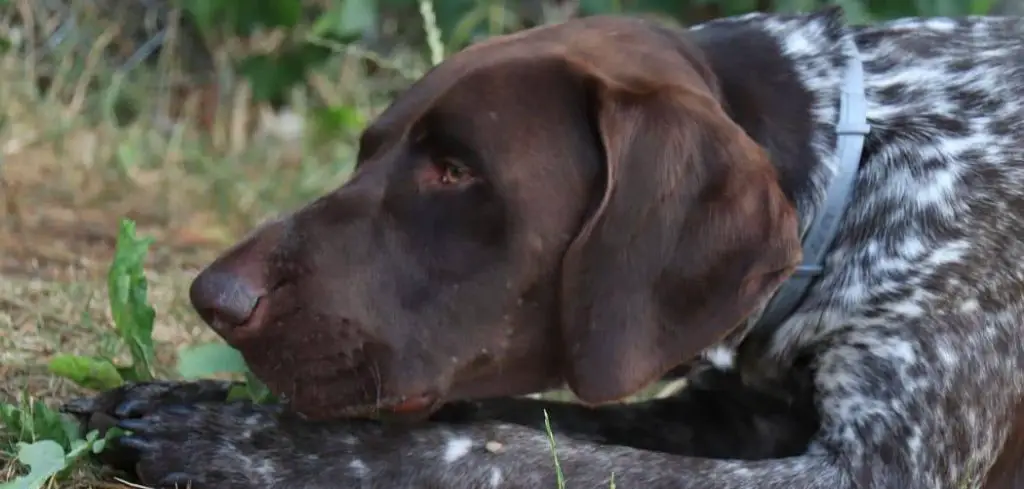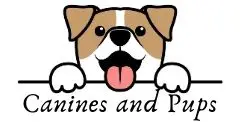If your dog is drooling excessively and throwing up bile, it can be both alarming and confusing.
These symptoms often occur together, pointing to underlying issues ranging from mild digestive upset to more serious health concerns.
We outline the most common causes of dog drooling and throwing up bile, what these symptoms mean, and when to seek veterinary help.
Here’s Why Dog Drooling and Throwing Up Bile Happens
Drooling in dogs is normal in some breeds, but excessive or sudden drooling could signal trouble. Meanwhile, throwing up bile, a yellow or greenish fluid, usually occurs when a dog vomits on an empty stomach. It’s typically a sign of gastrointestinal distress.
When these two symptoms appear together, they often point to issues in the digestive system, though they may also stem from toxins, stress, or organ dysfunction.

Common Causes of Dog Drooling and Throwing Up Bile
1. Gastrointestinal Irritation or Inflammation
A very common reason for a dog throwing up bile and drooling is gastrointestinal irritation.
Bile is produced in the liver and stored in the gallbladder, released into the small intestine to aid digestion.
When the stomach is empty, bile can build up and cause vomiting. At the same time, nausea can trigger drooling.
This usually happens early in the morning or late at night when a dog hasn’t eaten for several hours. Dogs with acid reflux or bilious vomiting syndrome are particularly prone to this.
Signs to watch for:
Yellow foam or liquid in vomit
Increased salivation
Lip licking
Lethargy or mild discomfort
Feed smaller, more frequent meals, especially before bed. Consult your vet if symptoms persist.
Related: Why do dogs drool before vomiting?
2. Ingestion of Toxins or Foreign Objects
Toxins from household cleaners, plants, spoiled food, or human medications can cause immediate symptoms like excessive drooling and vomiting bile.
Dogs may also drool and throw up bile if they’ve swallowed a foreign object that irritates or blocks their gastrointestinal tract.
Other symptoms of toxin ingestion include:
Tremors
Diarrhea
Seizures
Pale gums
If you suspect poisoning, don’t wait—take your dog to the emergency vet immediately.
Bring a sample of what you think they ingested, if possible.
3. Motion Sickness and Anxiety
Dogs experiencing motion sickness in a car or high-stress environments may drool excessively and later vomit bile due to nausea.
Anxiety and stress can stimulate excessive salivation and disrupt normal digestion, leading to bile vomiting.
Triggers include:
Car rides
Thunderstorms
Vet visits
New environments
For motion sickness, avoid feeding your dog before travel. Use vet-approved calming aids or anti-nausea medication if needed.
For anxiety-related symptoms, work with a vet or behaviorist on desensitization and calming strategies.
4. Pancreatitis
Pancreatitis is the inflammation of the pancreas and can cause severe drooling and vomiting of bile.
This condition often results from eating fatty foods, and is more common in breeds like Miniature Schnauzers.
Symptoms of pancreatitis:
Repeated bile vomiting
Intense abdominal pain (dog may adopt “prayer position”)
Drooling
Loss of appetite
Lethargy
Pancreatitis is a medical emergency. If your dog is showing these symptoms, take them to the vet urgently.
Treatment typically includes hospitalization, fluids, pain control, and dietary changes.
Related: Dog throwing up and drooling (Explained)
5. Liver or Kidney Disease
When a dog is drooling and throwing up yellow bile, it could also indicate organ dysfunction, particularly liver or kidney disease.
These organs play a critical role in filtering toxins and maintaining a healthy digestive system.
Liver/kidney issues may present with:
Yellowish gums or eyes (jaundice)
Increased thirst and urination
Weight loss
Bad breath (often with a metallic or ammonia smell)
Weakness or collapse
A blood test and urinalysis are needed to evaluate liver and kidney function.
Chronic organ issues can often be managed with diet, medication, and supportive care if caught early.
6. Gastric Dilatation-Volvulus (GDV)
GDV, or bloat, is a life-threatening emergency where the dog’s stomach fills with gas and twists. One of the early signs is unproductive retching, where your dog tries to vomit but brings up only foam or bile. Along with that, excessive drooling is very common.
Other GDV symptoms:
Distended abdomen
Restlessness
Weak pulse
Rapid breathing
Collapse
If you suspect GDV, go to an emergency vet immediately. This condition can become fatal within hours.
7. Dental Problems or Mouth Injuries
Dental diseases such as gingivitis, tooth abscesses, or mouth injuries can also make your dog drool and throw up bile.
The pain or discomfort in the mouth can lead to excessive drooling, while the nausea from pain or swallowed blood may trigger vomiting.
Signs to look for:
Bad breath
Pawing at the mouth
Refusal to eat
Bleeding gums
Schedule a dental checkup. Your vet may need to perform a cleaning, extract teeth, or treat infections.
When to Worry About Dog Drooling and Vomiting Bile
Occasional drooling and yellow bile vomiting may not be a reason to panic—especially if it happens in the morning on an empty stomach.
However, seek veterinary care if your dog shows any of these warning signs:
Persistent vomiting (more than once or twice a day)
Blood in vomit or stool
Lethargy or collapse
Loss of appetite lasting more than a day
Signs of dehydration (dry gums, sunken eyes)
Swollen abdomen or signs of pain
Dogs who are puppies, senior dogs, or have pre-existing conditions are more vulnerable and should be evaluated sooner rather than later.
How to Help a Dog Drooling and Throwing Up Bile
Here are some supportive steps you can take at home (after checking with your vet):
Adjust Feeding Schedule
Feeding your dog smaller, more frequent meals can prevent bile build-up in an empty stomach.Hydration Is Key
Encourage your dog to drink small amounts of water. Ice cubes or frozen broth cubes can help if they’re reluctant.Temporary Fasting
In mild cases, your vet may suggest skipping one meal to rest the stomach—but never withhold food for too long, especially in small breeds.Avoid Rich, Fatty Foods
Table scraps and fatty treats can trigger pancreatitis and digestive upset.Monitor for Recurrence
Keep a symptom diary: note time of day, food eaten, frequency of vomiting, and triggers like stress or motion.
Key Takeaway
Dog drooling and vomiting bile often happen together due to nausea, gastrointestinal distress, or a more serious condition.
From mild issues like bilious vomiting syndrome to emergencies like GDV or poisoning, the causes vary widely.
While occasional episodes may be harmless, persistent or severe symptoms should never be ignored.
If your dog frequently drools and throws up bile, contact your veterinarian to get a proper diagnosis and treatment plan.
By being proactive and informed, you can help your dog feel better, faster—and keep serious health problems at bay.
